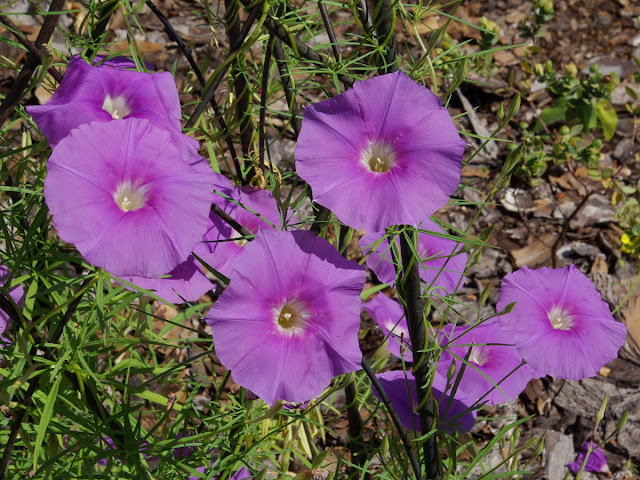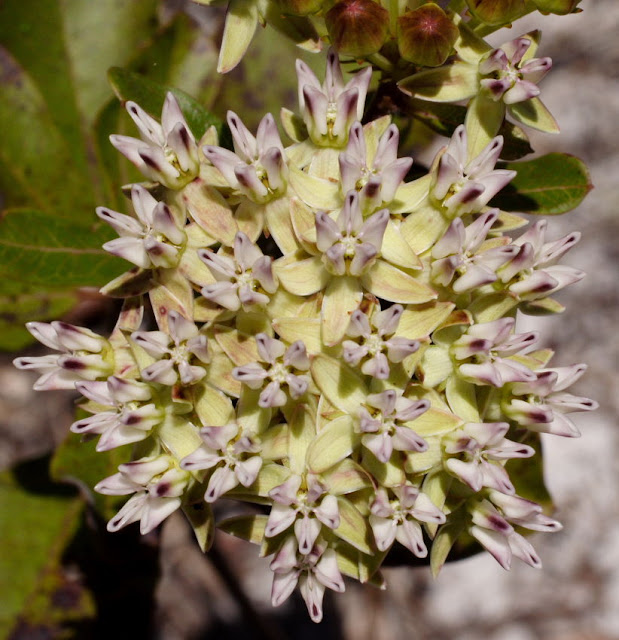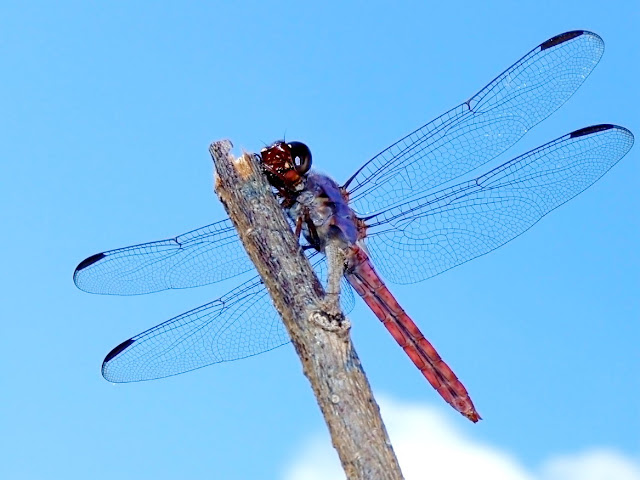 Plant in flower. © 2007 by Forest and Kim Starr. Used under a Creative Commons license.
Plant in flower. © 2007 by Forest and Kim Starr. Used under a Creative Commons license.
Dodonaea is a small genus of approximately 70 species of woody shrubs or small trees with alternate (or rarely opposite) simple or pinnate leaves. About 60 species are confined to Australia, about nine more occur in Africa, the Americas, and Asia, and one species, Dodonaea viscosa, is pantropical and occurs as a native plant on all continents except Antarctica and Europe. In Florida, Dodonaea viscosa is known as varnish leaf, a reference to the shiny, sometimes sticky, resinous coating on the leaves. It is remarkablly adapted to harsh coastal environments where it tolerates moderate salt spray, wind-blown sand, strong winds, and intense sunlight. Although usually growing as a small shrub up to 3 meters (10 feet) tall, in Hawaiian forests it is sometimes a tree up to 9 meters (30 feet) tall. Varnish leaf is characterized by alternate, simple, elliptic-shaped leaves; greenish flowers that are mostly either male or female on separate plants; and inflated, papery, 3-celled and 3-winged capsules that hold a few rounded, black seeds. The capsules are green when young, changing first to pale green and then gradually to various shades of pink, red, brick red, or purplish red, and eventually to light brown at maturity. Depending on growing conditions, temperature, and the plant's genetic background, the reddish color can be intense and may produce a highly ornamental effect.
Dodonaea viscosa is remarkable for its fast growth, general freedom from pests and diseases, and ability to thrive under highly varied conditions. In Florida, it is restricted to coastal strand and coastal hammocks but elsewhere in its range it grows in extremely diverse habitats. For example, in Hawaii it is found in "coastal dunes, lava fields, [and] dry, mesic and wet forests" (Anonymous 2009). Its altitudinal range in Hawaii is as impressive as the variety of habitats in which it occurs and it can be found in lowlands at 3 meters (10 feet) of elevation all the way up to subalpine shrubland at 2,347 meters (7,700 feet) (Little & Skolmen 1989). In the United States, in addition to to Florida, it occurs as a native plant in Arizona where it is described as "fairly common on dry, rocky slopes and in canyons, often on limestone" (Kearney & Peebles 1951:528). In California, it has been recorded from Orange County (USDA, NRCS 2010).
 Drawing from Little & Skolmen 1989, a U.S. Government work (as republished by the University of Hawaii at Manoa 2003).
Drawing from Little & Skolmen 1989, a U.S. Government work (as republished by the University of Hawaii at Manoa 2003).
Varnish leaf is easily grown from seeds, although patience is required since germination rates may vary from a few weeks to several months. Propgation may also be effected from shoots with half-ripe wood taken in the summer (Plants for a Future 2010). Due to its rapid growth and ease of cultivation, varnish leaf is highly recommended for beginning gardeners in USDA plant hardiness zones 9–11 and it can generally be expected to succeed so long as it is provided sufficient water during establishment and is situated in an area with ample sunshine and well-drained soil. It is admirably suited for coastal gardens where many other plants find life difficult but it will also grow well inland. Due to its fast growth, evergreen leaves, and tendency to freely branch, it is perhaps most often used as a hedge or screen but it may also be profitably grown as a specimen plant, foundation plant, and in coastal and tropical hammock restorations. In addition to the wild form with bright green leaves, there is a popular purple-leaved cultivar that is extensively cultivated in the United States; however, plants of this cultivar that I saw in San Francisco seemed less vigorous than the green-leaved plants I am familiar with in Florida. Varnish leaf has very few faults only two of which are fairly serious. Occasional plants may become black from mildew growing on the sugary secretions of mealy bugs and scale but this situation is easily remedied by cutting the plant to the ground, after which it soon sprouts new, pest-free shoots that can attain their former height within a year. Another problem is that plants can become a big, floppy messs if provided with too much water or if planted in very rich soil.

Besides it ornamental uses, varnish leaf has numerous medicinal uses although such practices are not recommended since the leaves contain cyanogenic compounds, tannins, and saponins, all of which are toxic in sufficiently high quantities. The conspicuous capsules are both reminiscent of hops and have been used as a substitute for hops to add a bitter flavor to beer, thus accounting for another of its common names, hop bush. It is of considerable biogeographic interest in that it "and wingleaf soapberry ... Sapindus saponaria, are the only tree species native in both Hawaii and continental United States" (Little & Skolmen 1989).
References
- Anonymous. 2009. Native Plants of Hawaii: Dodonaea viscosa. University of Hawaii. Internet
- Kearney, T.H. and R.H. Peebles. 1951. Arizona Flora. Berkeley and Los Angeles: University of California Press.
- Little, Jr., E.L. and R.G. Skolmen. 1989. Common Forest Trees of Hawaii (Native and Introduced). Agriculture Handbook No. 679. Forest Service, United States Department of Agriculture (as republished by the University of Hawaii at Manoa, 2003). Internet
- Plants for a Future. 2010. Dodonaea viscosa. Internet
- USDA, NRCS. 2010. The PLANTS Database (http://plants.usda.gov, 29 August 2010). Baton Rouge: National Plant Data Center. Internet
© 2010, except as noted, by Rufino Osorio.



































